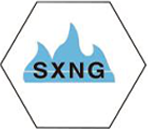
Nov . 24, 2024 10:19
Back to list
صمام التنفيس
Understanding Pressure Relief Valves A Key Component in Safety Systems
Pressure relief valves (PRVs) are essential safety devices used in various industries to prevent excessive pressure buildup in equipment and prevent catastrophic failures. These valves act as a fail-safe mechanism, ensuring that the pressure within a system remains within safe operating limits. This article will delve into the function, types, and importance of pressure relief valves.
.
There are several types of pressure relief valves, each serving specific requirements. The two most common types are spring-loaded valves and pilot-operated valves. Spring-loaded valves rely on a spring mechanism to hold the valve closed until the pressure exceeds the set limit. They are widely used due to their simplicity and reliability. On the other hand, pilot-operated valves use a pilot valve to control the main valve's opening and closing, allowing for more precise pressure control and greater flow rates. These valves are often employed in larger systems where managing pressure is critical.
صمام التنفيس

The importance of pressure relief valves cannot be overstated. In industries such as oil and gas, chemical manufacturing, and power generation, the consequences of pressure overages can be disastrous. Equipment failure can lead to explosions, fires, and significant environmental harm. By incorporating properly designed PRVs, facilities can mitigate these risks, ensuring not only the safety of personnel but also the protection of valuable equipment and the environment.
Another vital aspect of pressure relief valves is maintenance and testing. Regular inspections and testing are essential to ensure that valves operate correctly and that their set points are accurate. Over time, factors such as corrosion, wear, and material fatigue can affect valve performance. Therefore, implementing a routine maintenance program is crucial for the longevity and effectiveness of these safety devices.
In addition, regulations and industry standards often mandate the installation and maintenance of pressure relief valves. Adhering to these guidelines is not only a legal requirement but also a best practice for ensuring process safety. For instance, the American National Standards Institute (ANSI) and the American Society of Mechanical Engineers (ASME) provide guidelines for the design, construction, and maintenance of pressure relief systems.
In conclusion, pressure relief valves play a vital role in maintaining safety and operational efficiency across various industries. Their ability to prevent overpressure situations ensures that equipment remains functional and that hazardous incidents are avoided. As technology advances, the design and functionality of PRVs continue to improve, providing even greater safety assurances. Understanding these devices and their importance can help industries effectively manage pressure within their systems, ultimately leading to safer work environments and enhanced productivity.
Next:
Latest news
-
Safety Valve Spring-Loaded Design Overpressure ProtectionNewsJul.25,2025
-
Precision Voltage Regulator AC5 Accuracy Grade PerformanceNewsJul.25,2025
-
Natural Gas Pressure Regulating Skid Industrial Pipeline ApplicationsNewsJul.25,2025
-
Natural Gas Filter Stainless Steel Mesh Element DesignNewsJul.25,2025
-
Gas Pressure Regulator Valve Direct-Acting Spring-Loaded DesignNewsJul.25,2025
-
Decompression Equipment Multi-Stage Heat Exchange System DesignNewsJul.25,2025

